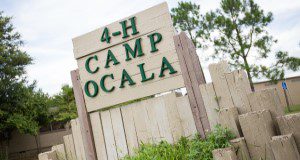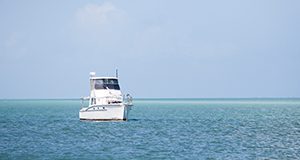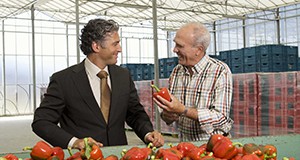Utilizing mindfulness as an evening reflection at residential camps has been developed as a tool for use at the end of the day during residential camps, though language may be modified for use at the end of classes or day camps. The four lessons in this new 7-page publication of the UF/IFAS Florida 4-H Youth Development Program, written by Heather Janney, were developed as a way for youth to reflect on their activities throughout the day. It is recommended to do only one lesson 15-20 minutes per day.
https://edis.ifas.ufl.edu/4h412
Tag: Communication
Cetaceans 4th Grade Curriculum: Lesson 14: How Do Right Whales Communicate?
This 3-page document is the fourteenth lesson in the Cetaceans 4th Grade Curriculum. It contains information that will help students learn how baleen whales use sound to communicate, and how human-created noise in the ocean may affect their ability to do so. Written by Maia Patterson McGuire and Ruth Francis-Floyd, and published by the UF/IFAS Veterinary Medicine–Large Animal Clinical Sciences Department, June 2019.
http://edis.ifas.ufl.edu/vm239
The Art of Goodbye: Communication Considerations
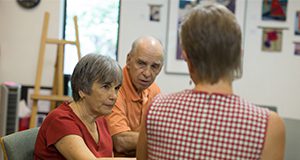 People are frequently at a loss for the best way to begin a discussion about end-of-life concerns with loved ones and health care providers and are also unsure of the topics they should cover. Nonetheless, conversations about end-of-life care and advance directives can help ensure that the person’s wishes are honored. These measures also eliminate much of the difficult decision-making that loved ones typically face at the time of their loved ones’ passing. This 5-page fact sheet, part of a new series entitled The Art of Goodbye, discusses the barriers to discussing the end of life and the process of communication with loved ones and health care providers. Written by Suzanna Smith, Lynda Spence, and Chelsea Tafelski, and published by the UF Department of Family, Youth and Community Sciences, October 2016.
People are frequently at a loss for the best way to begin a discussion about end-of-life concerns with loved ones and health care providers and are also unsure of the topics they should cover. Nonetheless, conversations about end-of-life care and advance directives can help ensure that the person’s wishes are honored. These measures also eliminate much of the difficult decision-making that loved ones typically face at the time of their loved ones’ passing. This 5-page fact sheet, part of a new series entitled The Art of Goodbye, discusses the barriers to discussing the end of life and the process of communication with loved ones and health care providers. Written by Suzanna Smith, Lynda Spence, and Chelsea Tafelski, and published by the UF Department of Family, Youth and Community Sciences, October 2016.
http://edis.ifas.ufl.edu/fy1470
The Art of Goodbye: Why People Are Talking About the End of Life
 Mortality has been a taboo subject for many years. Many cultural, demographic, educational, and policy changes have played a part in a shift toward an increased openness to talking about death as a natural part of life in the United States. This 5-page fact sheet is the first publication in a new series entitled The Art of Goodbye, and it covers changes in living and dying, preferences for the end of life, roles of substitute decision makers in health care, and communication. Written by Suzanna Smith and Lynda Spence, and published by the UF Department of Family, Youth and Community Sciences, October 2016.
Mortality has been a taboo subject for many years. Many cultural, demographic, educational, and policy changes have played a part in a shift toward an increased openness to talking about death as a natural part of life in the United States. This 5-page fact sheet is the first publication in a new series entitled The Art of Goodbye, and it covers changes in living and dying, preferences for the end of life, roles of substitute decision makers in health care, and communication. Written by Suzanna Smith and Lynda Spence, and published by the UF Department of Family, Youth and Community Sciences, October 2016.
http://edis.ifas.ufl.edu/fy1468
Understanding Science: How to Fill the Communication Gap
The industrialization of society has led to many scientific advancements, which have both benefits and controversies. Despite sound science, controversies around scientific issues have led the public to make decisions that disagree with scientific evidence. Why does this gap between science and perception exist? This four-page fact sheet looks at the characteristics of scientists, the media, and the public to help explain how the gap in science communication has occurred while also providing strategies for closing that gap in the future. Written by Joy N. Rumble and published by the Department of Agricultural Education and Communication.
http://edis.ifas.ufl.edu/wc254
Transparency in Agriculture and Natural Resources: Defining Transparent Communication
When we think about transparency, we usually think about business, public relations, and government; however; transparency is also an important consideration in agriculture and food industries. Defined as openness and the opposite of secrecy, transparency can be conceptualized as a communication strategy that the agricultural industry can use to interact with consumers and other audiences. This 3-page fact sheet defines transparent communication as containing substantial information, incorporating audience participation, and maintaining accountability. Written by Joy N. Rumble, and published by the UF Department of Agricultural Education and Communication, September 2015.
http://edis.ifas.ufl.edu/wc225
Getting the Most out of Social Media

Agriculturalists can use social media as a powerful tool for marketing their products and establishing a brand identity. The goal of this series is to help agriculturalists understand how social media can work for them. The series also discusses the various social media platforms and how to use social media strategically and wisely. Written by Jessica C. Fernandez and Joy N. Rumble, and published by the UF Department of Agricultural Education and Communication, August 2015. (Photo credit: tanuha2001/iStock/Thinkstock.com)
http://edis.ifas.ufl.edu/topic_series_getting_the_most_out_of_social_media
Communicating with Extension Clients about Water
 As the U.S. and Florida populations continue to increase and the demand for fresh, clean water rises, water quality and quantity issues will become increasingly important. Extension faculty should understand public opinion surrounding water issues and identify the information that needs to be communicated to the public about water issues, as well as the best mode for this communication. This EDIS publication will provide an overview of how to communicate with Florida residents about water, including information about their preferred communication method and what topics surrounding water Florida residents find of interest. This publication will better equip Extension faculty to discuss water quantity and quality issues with Florida residents. This 4-page fact sheet was written by Caroline G. Roper and Alexa J. Lamm, and published by the UF Department of Agricultural Education and Communication, June 2014.
As the U.S. and Florida populations continue to increase and the demand for fresh, clean water rises, water quality and quantity issues will become increasingly important. Extension faculty should understand public opinion surrounding water issues and identify the information that needs to be communicated to the public about water issues, as well as the best mode for this communication. This EDIS publication will provide an overview of how to communicate with Florida residents about water, including information about their preferred communication method and what topics surrounding water Florida residents find of interest. This publication will better equip Extension faculty to discuss water quantity and quality issues with Florida residents. This 4-page fact sheet was written by Caroline G. Roper and Alexa J. Lamm, and published by the UF Department of Agricultural Education and Communication, June 2014.
http://edis.ifas.ufl.edu/wc165
Working in Groups: The Importance of Communication in Developing Trust and Cooperation
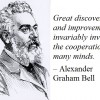 Working together in groups can be a great experience or one filled with stress and anxiety. The success of group work depends largely on the trust developed among group members and the respect they show each other. When an individual has had a positive experience in a group, he/she is more likely to take risks, ask questions, and share ideas that will benefit the total group. This 3-page fact sheet was written by Bryan D. Terry, and published by the UF Department of Family Youth and Community Sciences, August 2013.
Working together in groups can be a great experience or one filled with stress and anxiety. The success of group work depends largely on the trust developed among group members and the respect they show each other. When an individual has had a positive experience in a group, he/she is more likely to take risks, ask questions, and share ideas that will benefit the total group. This 3-page fact sheet was written by Bryan D. Terry, and published by the UF Department of Family Youth and Community Sciences, August 2013.
http://edis.ifas.ufl.edu/fy1378
WC093 Risk and Crisis Communication: When Things Go Wrong
W093, a 7-page illustrated fact sheet by Ricky Telg, examines the practice of crisis and risk communication as part of an organization’s overall crisis plan. Includes references. Published by the UF Department of Agricultural Education and Communication, July 2010.
http://edis.ifas.ufl.edu/wc093
